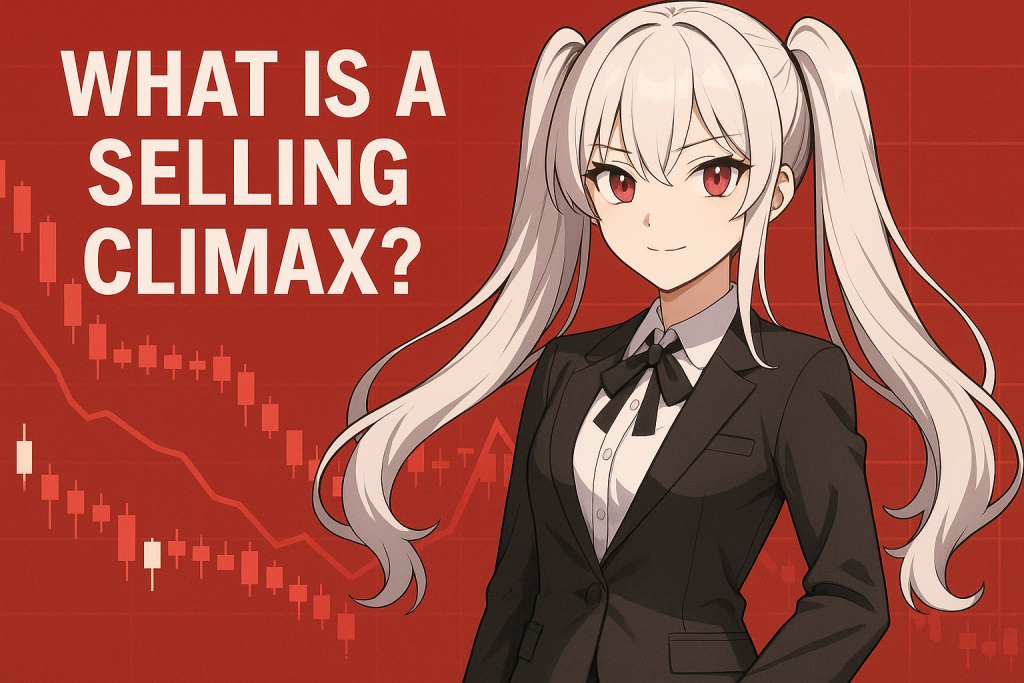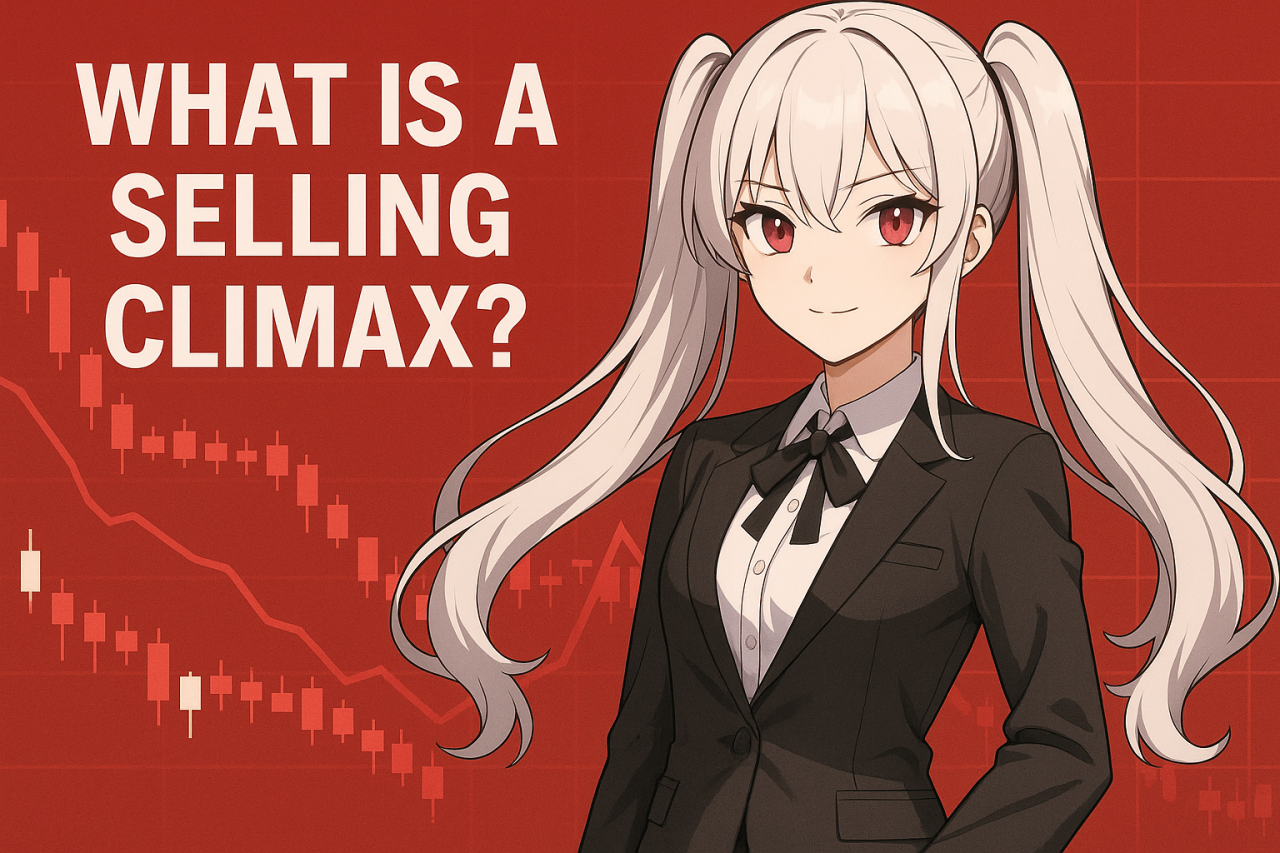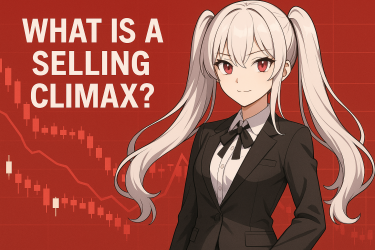What is Selicra (Selling Climax)?
Definition and Characteristics of Selicra
Selicra (selling climax) refers to a situation where many market participants become bearish, cannot endure, and sell off simultaneously, causing a sharp decline in stock prices. Typically, after such a steep drop, the market is more likely to reverse.
Selicra is a unique phenomenon in the equity market that emerges as a result of a drastic deterioration in investor sentiment. Understanding this phenomenon is also important from a risk management perspective, because selicra is difficult to predict and often occurs abruptly, making prior preparation essential.
To gain a deeper understanding of selicra’s definition, it is important to grasp market sentiment, i.e., the overall psychological state of investors. When the market shifts from optimism to pessimism, the likelihood of selicra increases. Selicra can also serve as an important indicator in technical analysis. A sudden surge in volume or sharp price movements may be recognized as a sign of selicra.
The main characteristics of selicra include a sharp decline in stock prices. This is caused by many investors panicking and selling off their holdings. Volume also rises sharply, reflecting market turmoil numerically. Selicra may end quickly or may engulf the market for an extended period, so investors need to respond flexibly according to the situation.
Background of Selicra Occurrence
Selicra tends to occur when market anxiety and fear reach a peak. For example, deteriorating economic indicators, downward revisions of corporate earnings, or geopolitical risks can trigger it. Margin calls and forced liquidations for investors engaged in leveraged trading also accelerate selicra.
The background of selicra involves a complex interplay of various factors. Economic factors include concerns about a recession and accelerating inflation. Corporate earnings deterioration can also stoke investor anxiety and potentially trigger selicra. Moreover, geopolitical risks and natural disasters can worsen market sentiment and serve as a trigger for selicra.
Margin calls and forced liquidations for investors using leveraged trading are particularly important factors that accelerate selicra. Leveraged trading allows transactions beyond one’s own capital but also carries the risk of amplified losses. If stock prices fall contrary to expectations, investors may be required to provide additional collateral (margin). If they cannot pay the margin, a forced liquidation (forced settlement) occurs, which can trigger further price declines and accelerate selicra.
The psychological state of market participants also plays a crucial role in the background of selicra. Investors are driven by a strong desire to avoid losses, so when prices fall, they fear that they will fall further. This anxiety spreads in a chain reaction, triggering panic selling and leading to selicra.
Types of Selicra
Selicra can take various forms depending on scale and target, such as those occurring across the entire small‑cap market or affecting specific stocks. It may end quickly or persist for an extended period.
Understanding the types of selicra is crucial for risk management. A selicra that occurs across the entire market can affect a wide range of investors, potentially causing significant losses. Conversely, a selicra affecting a specific stock can be a major blow to investors in that stock, but its impact on the broader market is limited.
The duration of selicra also influences investment decisions. A short‑term selicra can be viewed as a temporary correction and even a buying opportunity. However, a selicra that lasts for an extended period may signal structural market issues, requiring cautious action.
To determine the type of selicra, it is necessary to comprehensively analyze overall market trends and individual stock conditions. Reviewing past selicra cases is also effective; analyzing historical examples helps identify the types, likely triggers, and subsequent market movements.
Identifying Sell Clusters on Stock Charts
Sudden Increase in Trading Volume
A sudden increase in trading volume is a sign of a sell cluster. Many investors panic sell, resulting in a volume that is much larger than normal trading volume.
A sudden increase in volume is one of the most obvious signs of a sell cluster on a stock chart. Typically, when the stock price drops sharply, volume tends to increase, but in a sell cluster the increase is extraordinary. This is because many investors sell simultaneously, flooding the market with sell orders.
To identify a sudden volume increase, it is important to compare it with past trading volume. If the volume is clearly larger than the average over the past few months, you should suspect a sell cluster. Also, observing the volume trend is important. If volume is gradually increasing, it may be a sign that a sell cluster is approaching.
Along with the sudden volume increase, it is important to check the price movement. If volume surges but the price hardly moves, it may not be a sell cluster. However, if the price drops sharply at the same time as the volume spike, the likelihood of a sell cluster is very high.
Rapid Price Movements
A sharp drop in the stock price over a short period is also a characteristic of a sell cluster. It can involve consecutive stop-losses or a very large daily price range.
Rapid price movements are a clear indicator of market instability. In particular, during a sell cluster, the price often fluctuates beyond the normal range, exerting significant psychological pressure on investors. In such circumstances, maintaining composure and avoiding emotional trading is extremely important.
A situation of consecutive stop-losses suggests extremely strong selling pressure in the market. This means many investors panic and cannot stop the price decline. In such a scenario, buying too easily is very risky and may lead to further decline.
A very large daily price range is also a feature of a sell cluster. It indicates that buying and selling forces clash intensely, causing the price to swing wildly. In such a situation, it is important not to be swayed by short-term price movements and to make investment decisions from a long-term perspective. Also, thorough risk management and measures to minimize losses are necessary.

Appearance of Lower Wicks
After a sell cluster, a candlestick with a lower wick may appear. This suggests that the stock was heavily sold temporarily, but then bought back, causing the price to recover.
A lower wick is part of the candlestick shape and represents the difference between the lowest price and the closing price over a period. A candlestick with a long lower wick indicates that the price fell sharply during that period but was eventually bought back, causing the price to recover. A lower wick that appears after a sell cluster may suggest that the market has bottomed and a reversal is beginning to show.
When confirming the appearance of a lower wick, it is important to analyze it together with volume. If a candlestick with a lower wick appears and volume also increases, it suggests strong buying momentum and a high likelihood of a reversal. However, if volume is low, it may be only a temporary buyback, requiring cautious judgment.
A lower wick is merely one sign that a reversal may occur after a sell cluster. Just because a lower wick appears does not mean you should buy immediately; instead, consider other technical indicators and market conditions comprehensively before making a cautious investment decision. Also, clearly set stop-loss levels and enforce risk management.
Precautions and Countermeasures When a Sell-Off Occurs
Maintain Calm Judgment
During a sell-off, it is important not to be swept up by the overall market mood and to maintain calm judgment. Avoid emotional trading and base your investment decisions on objective data.
During a sell-off, the entire market tends to fall into panic and investor sentiment deteriorates sharply. In such circumstances, maintaining composure is extremely difficult, but emotional trading can amplify losses, so it must be avoided at all costs. To keep calm judgment, first cut off market information and take time to review your investment strategy.
To make investment decisions based on objective data, it is effective to use methods such as technical analysis and fundamental analysis. Technical analysis uses data such as price charts and volume to analyze past price movements and predict future price trends. Fundamental analysis evaluates a company’s value using data such as its performance and financial condition, and makes investment decisions.
During a sell-off, it is important not to be misled by market noise and to make investment decisions calmly and objectively based on your own strategy. Also, thorough risk management and measures to minimize losses are essential.
Avoid Easy Buying
A sell-off can present a buying opportunity, but impulsive buying is risky. Confirm a bottom before proceeding to buy cautiously. It can be helpful to use information from firms like Daiwa Securities for investment decisions.
A sell-off can be seen as a chance to buy stocks at a discount because prices fall sharply. However, until a bottom is confirmed, there is a risk of further decline. Impulsive buying is like stepping into a bottomless pit and can lead to significant losses.
There are several ways to confirm a bottom. First, wait for the price to shift from a downtrend to a flat or uptrend. Next, wait for volume to decline, which suggests selling pressure is easing. Additionally, use technical indicators to confirm bottom signals. For example, if the RSI (Relative Strength Index) falls below 30 and then turns upward, it can be considered a bottom signal.
Brokerage firms such as Daiwa Securities provide various market information. Using this information to analyze market trends and individual stock conditions can be effective. However, brokerage information is only reference material and should not be taken at face value. Base your final investment decisions on your own judgment.
Set a Stop-Loss Line
Even if you buy in anticipation of a rebound after a sell-off, it is important to set a clear stop-loss line. This allows you to minimize losses if the price falls contrary to expectations.
A stop-loss line is an order that automatically locks in a loss when the price falls below a certain level. By setting a stop-loss line, you can keep losses to a minimum even if the price drops against your expectations. When setting a stop-loss line, consider your risk tolerance and set it within a reasonable range.
There are several ways to set a stop-loss line. First, use technical analysis to examine past price movements and set a support line as the stop-loss line. A support line is a price range that has previously halted a decline. Next, consider volatility (price fluctuation rate) when setting the stop-loss line. For high-volatility stocks, set a wider stop-loss line; for low-volatility stocks, set a tighter line.
Once you set a stop-loss line, be sure to execute it. If you hesitate to cut losses even when the stop-loss line is reached, losses can expand further. Stop-loss is one of the essential risk management strategies in investing, and it is important to execute it mechanically without being swayed by emotion.
Post-Serica Strategy: Aiming for Recovery from Bottoming
Identifying Bottoming Signals
If after Serica the stock price stabilizes and volume starts to decline, it may be a bottoming signal. Also, if the price gradually starts to rise and begins to break above the moving average, you can say that signs of a full recovery are emerging.
Identifying bottoming signals is extremely important in post-Serica investment strategy. If you buy too easily without confirming a bottom, you risk being dragged into further decline. To identify bottoming signals, you need to comprehensively analyze price movements, volume, technical indicators, etc.
If the stock price stabilizes and volume decreases, it suggests that selling pressure is easing. This is one sign of a potential bottom. However, a stable price alone does not confirm a bottom; you must also verify that volume is declining.
If the price gradually starts to rise and appears to break above the moving average, you can say that signs of a full recovery are emerging. A moving average is a line that connects the average price over a certain period, used to grasp the price trend. Breaking above the moving average is considered a sign of a shift to an upward trend.
Aiming for Pullback Buying
Even after a bottom and a shift to an uptrend, a temporary pullback can occur. By targeting such pullbacks for buying, you can build positions at more favorable prices.
A pullback is a temporary decline in price during an uptrend. Pullbacks occur when temporary profit‑taking sells appear while the uptrend continues. By buying during pullbacks, you can ride the uptrend while securing a better price.
When targeting pullbacks, there are several points to note. First, you must distinguish a pullback from a plain downtrend. A pullback is a temporary decline within an uptrend, unlike a downtrend. To identify pullbacks, use price charts and technical indicators to confirm that the uptrend is still ongoing.
Next, you need to predict the depth of the pullback. The depth is a key factor in forecasting the strength of the subsequent uptrend. A shallow pullback suggests a strong uptrend, while a deep pullback indicates a weaker uptrend. To predict pullback depth, analyze past price movements and market sentiment.
Focus on Diversified Investing
Even when targeting recovery after Serica, concentrated investing is risky. Diversifying across multiple securities can reduce risk.
Diversified investing is a strategy that spreads capital across multiple securities or assets to reduce risk. Concentrated investing focuses capital on a specific security or asset, which can yield higher returns but also increases risk. Even when targeting post‑Serica recovery, concentrated investing is risky, so focus on diversification.
When diversifying, investing in different industries and markets can further reduce risk. For example, diversifying into bonds or real estate in addition to stocks spreads risk. Likewise, diversifying into overseas stocks as well as domestic stocks spreads risk.
When diversifying, it is important to consider your risk tolerance and build an appropriate portfolio. If your risk tolerance is high, increase the proportion of stocks; if it is low, increase bonds, etc., adjusting the portfolio to match your tolerance.
Summary
Serrica is a temporary disruption in the stock market, but if you handle it calmly, it can become a big opportunity. Observe the stock price chart carefully, thoroughly manage risk, and make wise investment decisions.
Serrica is a phenomenon that occurs as a result of investors’ psychology deteriorating sharply, causing stock prices to fall rapidly, posing a threat to many investors. However, if you handle Serrica calmly, it can become an opportunity to buy stocks at a bargain price. During a Serrica event, it is important to avoid emotional trading and to maintain calm judgment.
By carefully observing the stock price chart and identifying signs such as a sudden surge in volume, sharp price swings, and the appearance of lower wicks, you can detect early signs of Serrica. Additionally, setting stop‑loss levels and rigorously managing risk can minimize losses.
When aiming for a recovery after Serrica, you can build positions at more favorable prices by spotting bottom‑formation signs and targeting pullback buys. Also, practicing diversification can reduce risk. Serrica is a temporary disruption in the stock market, but if you handle it calmly, it can become a big opportunity. Observe the stock price chart carefully, thoroughly manage risk, and make wise investment decisions.
Reference sites
CoinPost(コインポスト)は国内最大手仮想通貨(暗号資産)・ブロックチェーンメディアです。ビットコイン(BTC)、…












